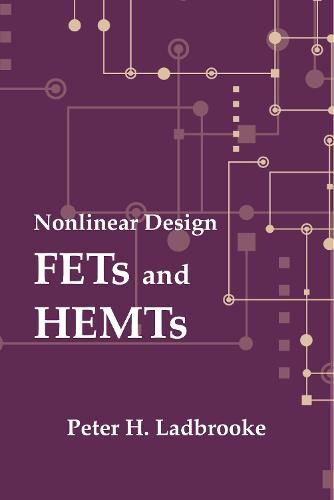Readings Newsletter
Become a Readings Member to make your shopping experience even easier.
Sign in or sign up for free!
You’re not far away from qualifying for FREE standard shipping within Australia
You’ve qualified for FREE standard shipping within Australia
The cart is loading…






Despite its continuing popularity, the so-called standard circuit model of compound semiconductor field-effect transistors (FETs) and high electron mobility transistors (HEMTs) is shown to have a limitation for nonlinear analysis and design: it is valid only in the static limit. When the voltages and currents are time-varying, as they must be for these devices to have any practical use, the model progressively fails for higher specification circuits.
This book shows how to reform the standard model to render it fully compliant with the way FETs and HEMTs actually function, thus rendering it valid dynamically. Proof-of-principle is demonstrated for several practical circuits, including a frequency doubler and amplifiers with demanding performance criteria. Methods for extracting both the reformulated model and the standard model are described, including a scheme for re-constructing from S-parameters the bias-dependent dynamic (or RF) I(V) characteristics along which devices work in real-world applications, and as needed for the design of nonlinear circuits using harmonic-balance and time-domain simulators.
The book includes a historical review of how variations on the standard model theme evolved, leading up to one of the most widely used-the Angelov (or Chalmers) model.
$9.00 standard shipping within Australia
FREE standard shipping within Australia for orders over $100.00
Express & International shipping calculated at checkout
Despite its continuing popularity, the so-called standard circuit model of compound semiconductor field-effect transistors (FETs) and high electron mobility transistors (HEMTs) is shown to have a limitation for nonlinear analysis and design: it is valid only in the static limit. When the voltages and currents are time-varying, as they must be for these devices to have any practical use, the model progressively fails for higher specification circuits.
This book shows how to reform the standard model to render it fully compliant with the way FETs and HEMTs actually function, thus rendering it valid dynamically. Proof-of-principle is demonstrated for several practical circuits, including a frequency doubler and amplifiers with demanding performance criteria. Methods for extracting both the reformulated model and the standard model are described, including a scheme for re-constructing from S-parameters the bias-dependent dynamic (or RF) I(V) characteristics along which devices work in real-world applications, and as needed for the design of nonlinear circuits using harmonic-balance and time-domain simulators.
The book includes a historical review of how variations on the standard model theme evolved, leading up to one of the most widely used-the Angelov (or Chalmers) model.